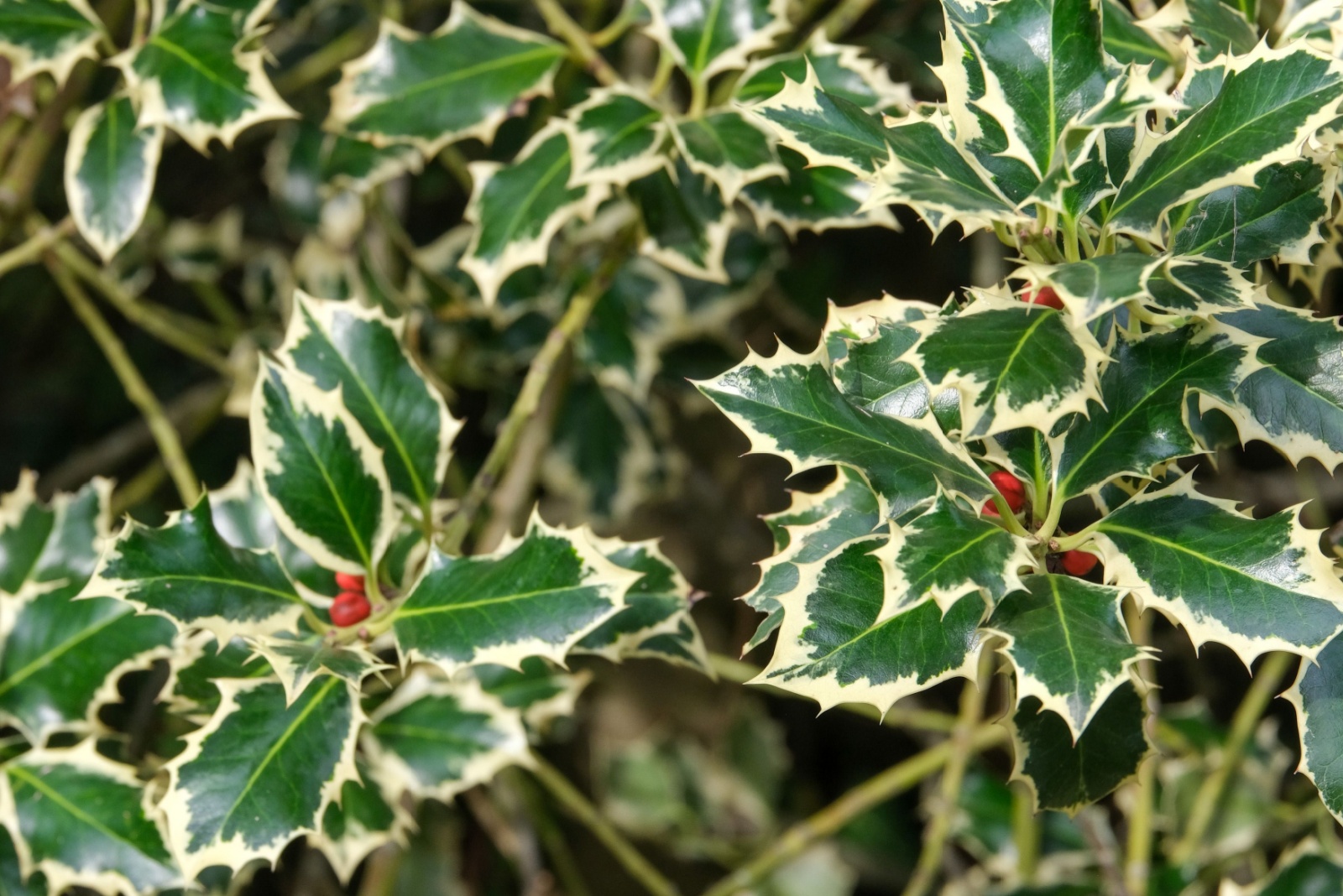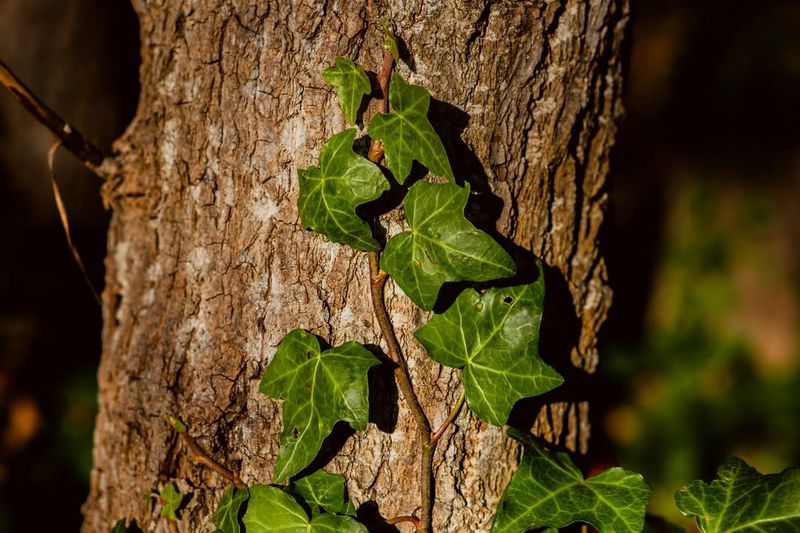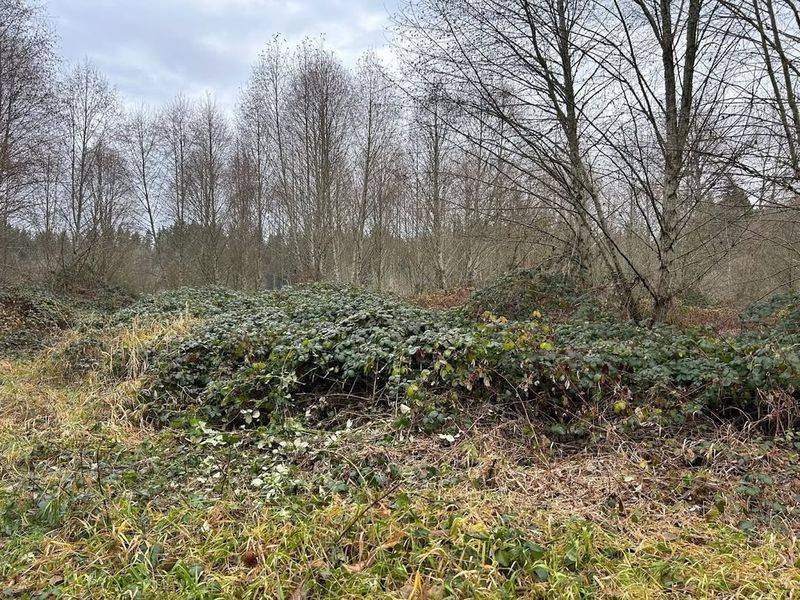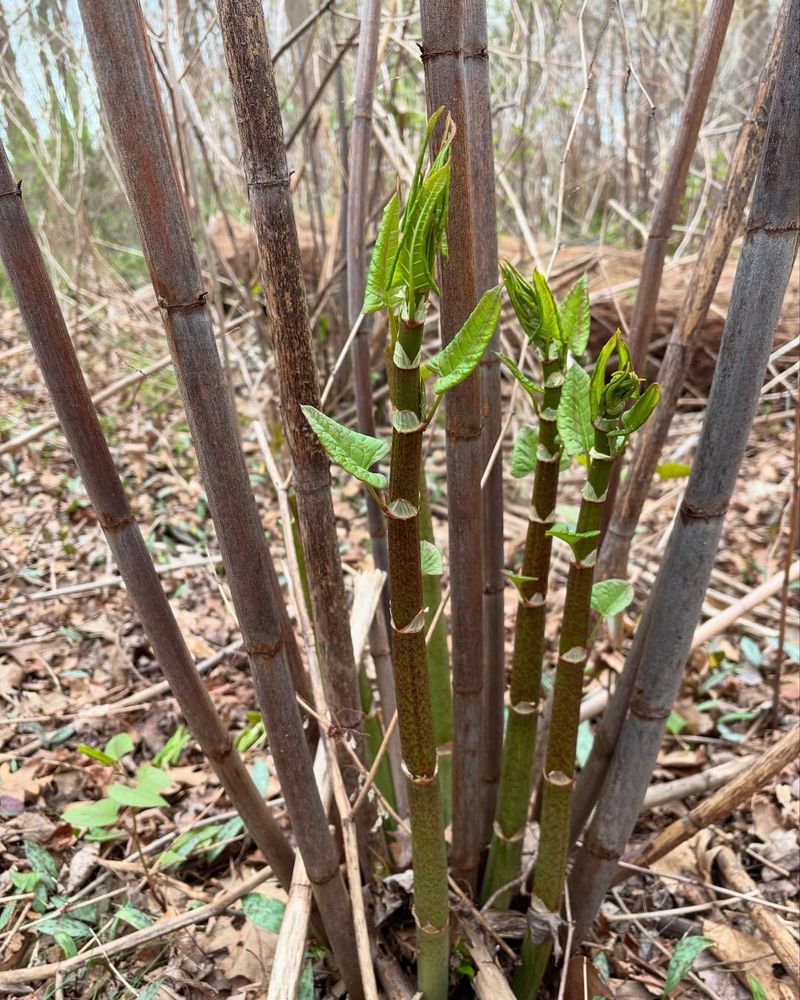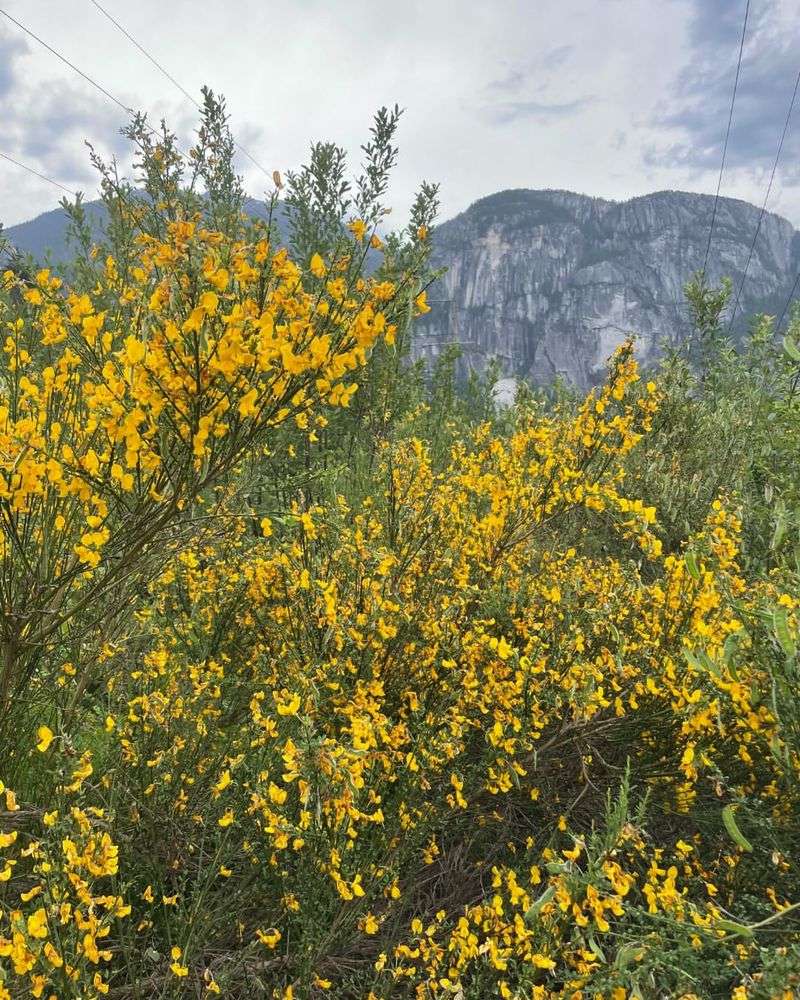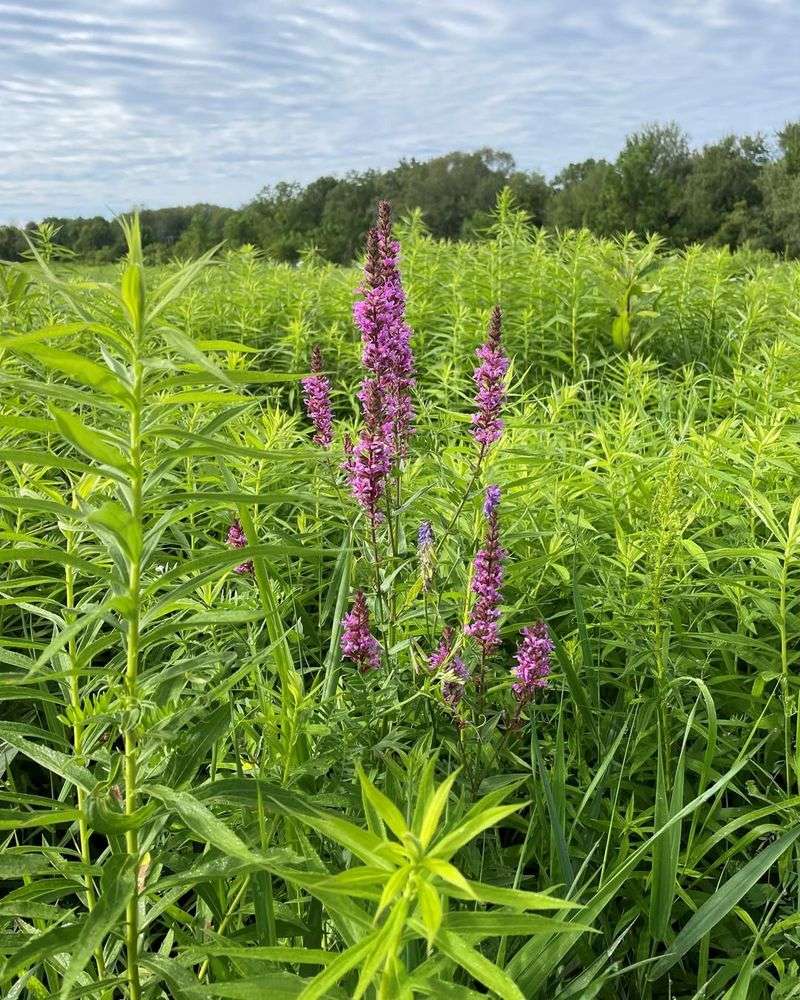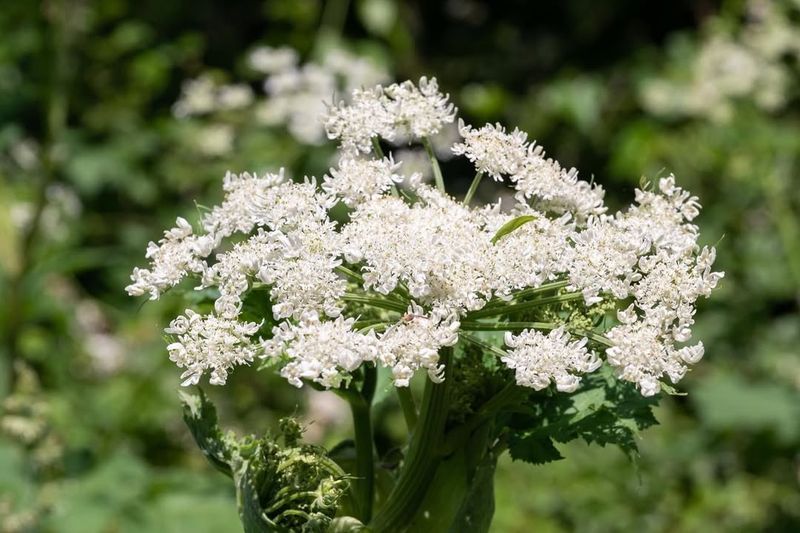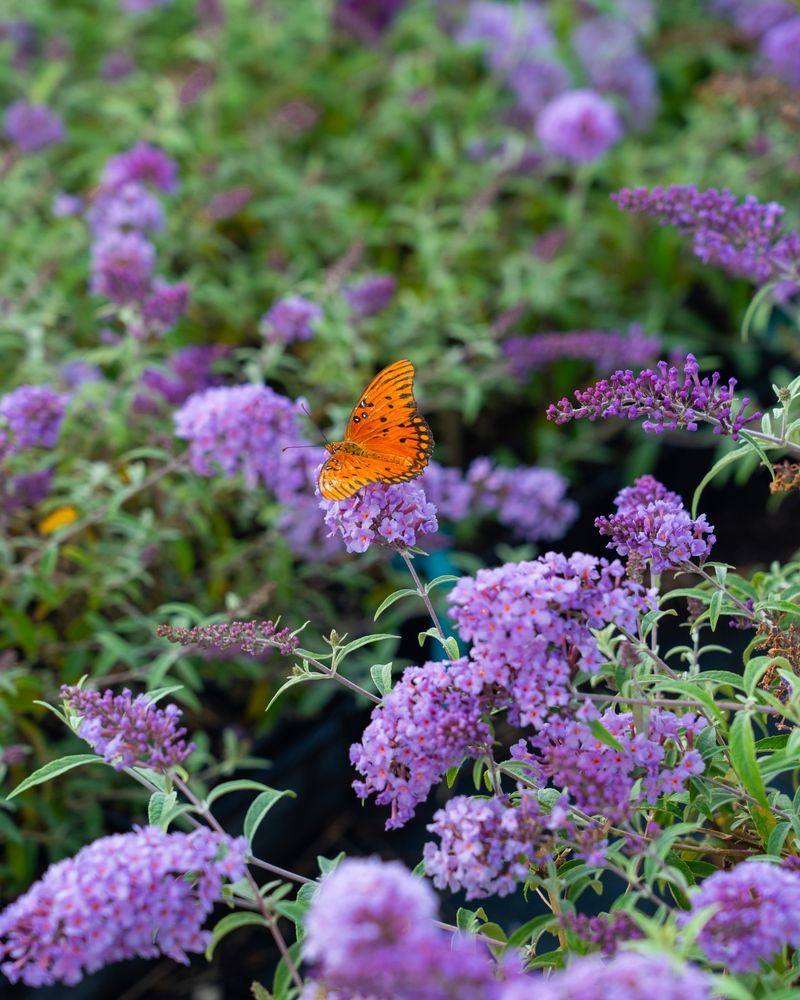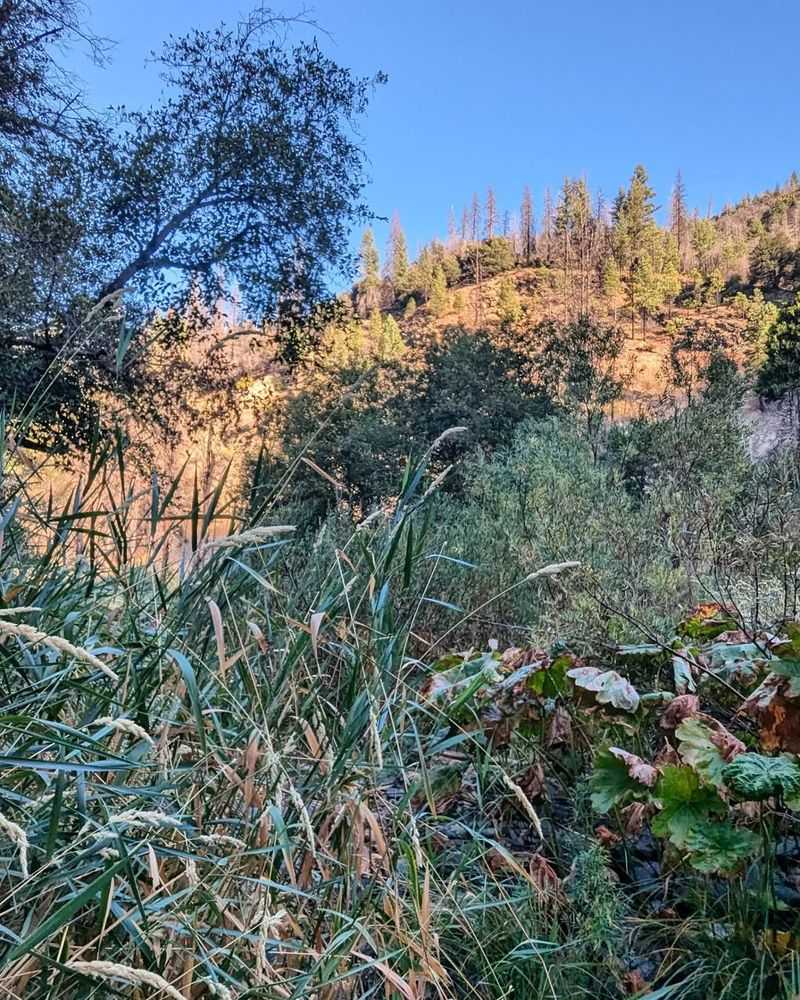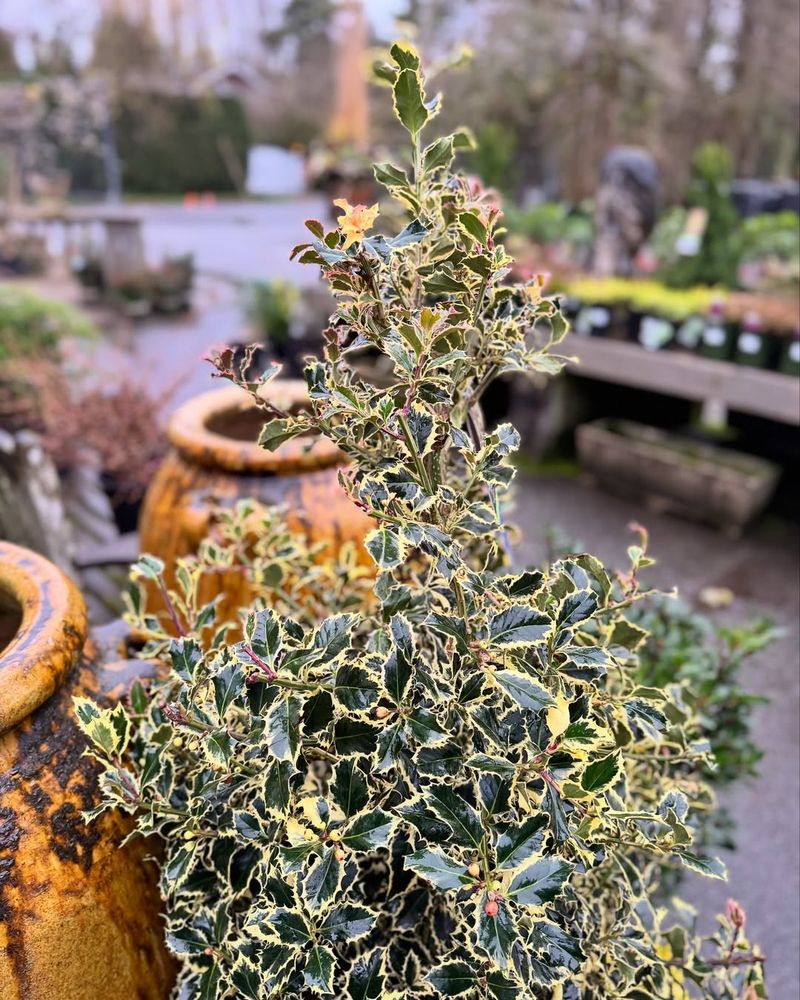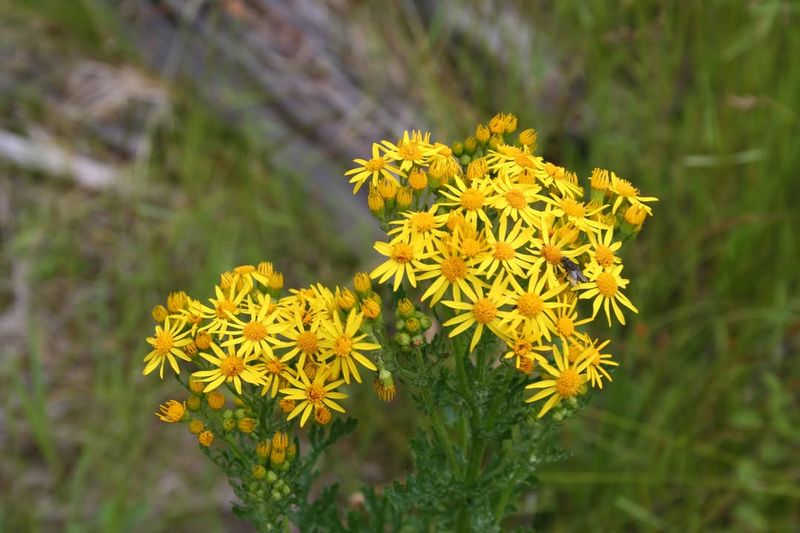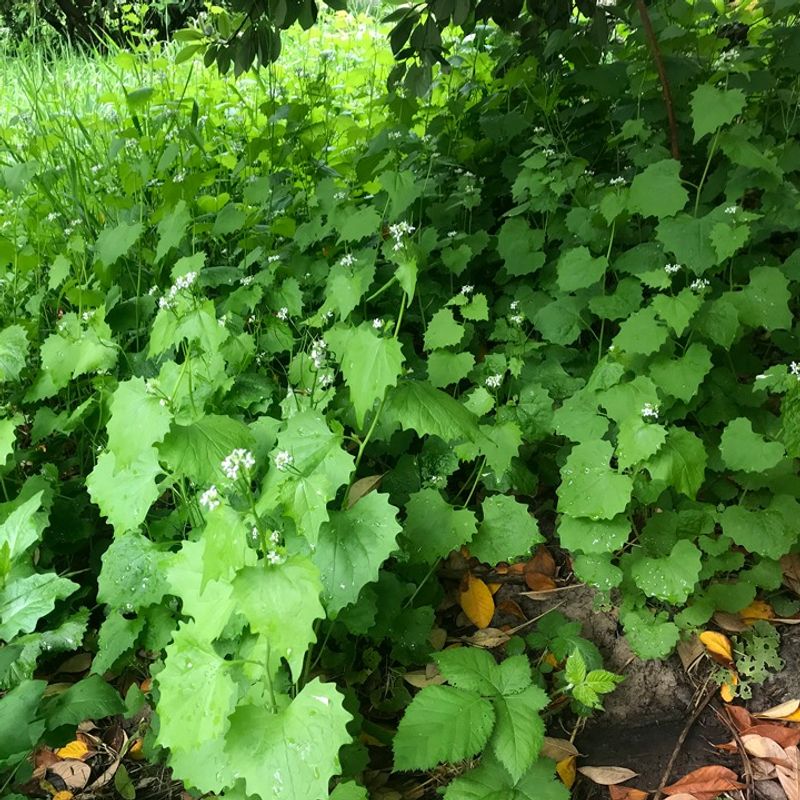Washington’s beautiful landscapes face a growing threat from invasive plants that crowd out native species and harm local ecosystems. Many of these aggressive plants are spreading fast through yards, gardens, and wild spaces across the state.
Homeowners may soon need to take action to remove certain invasive species from their properties to protect the environment and prevent costly damage.
1. English Ivy
Climbing walls and smothering trees, English ivy might look charming but it’s actually a serious problem for Washington’s forests. Its thick vines strangle native plants and block sunlight from reaching the ground.
The weight of mature ivy can even topple large trees during storms. Removing it requires cutting vines at the base and pulling them carefully from surfaces.
Homeowners should check fences and garden areas regularly for new growth and remove it immediately before it spreads.
2. Himalayan Blackberry
Anyone who’s walked through Washington woods knows the painful scratch of Himalayan blackberry thorns. Originally brought here for fruit, these aggressive brambles now form impenetrable thickets that choke out everything else.
Birds spread the seeds everywhere, making control extremely difficult. The thorny canes grow incredibly fast, sometimes reaching 20 feet in a single season.
Cutting them back repeatedly and digging out roots is the only effective removal method, though it requires serious effort and protective gear.
3. Japanese Knotweed
With bamboo-like stems and heart-shaped leaves, Japanese knotweed looks almost tropical but causes nightmare problems for Washington property owners. Its roots can break through concrete foundations, driveways, and underground pipes.
A tiny piece of root can sprout into a whole new plant, making removal incredibly challenging. Professional removal often costs thousands of dollars.
Never compost this plant or move soil containing its roots, as you’ll just spread the problem to new areas.
4. Scotch Broom
Bright yellow flowers make Scotch broom seem pretty along roadsides, but don’t be fooled by its cheerful appearance. Each plant produces thousands of seeds that remain viable in soil for decades.
It grows in poor soil where native Washington plants struggle, then changes soil chemistry to favor more broom. The woody shrubs also increase wildfire danger during dry summers.
Pull young plants before they flower, making sure to remove the entire root system to prevent regrowth.
5. Purple Loosestrife
Wetlands and stream banks burst with purple loosestrife’s showy spikes each summer, but this beauty destroys critical habitat for native wildlife. A single plant produces millions of tiny seeds that spread through water and on animals.
It forms dense stands that push out cattails and other wetland plants that waterfowl and fish depend on. Manual removal works for small patches if you dig up all roots.
Larger infestations may require professional help to protect sensitive aquatic ecosystems.
6. Giant Hogweed
Standing up to 15 feet tall with dinner-plate-sized leaves, giant hogweed looks like something from a science fiction movie. Its sap contains toxic chemicals that cause severe burns and blisters when exposed to sunlight.
Children are especially at risk because the huge plants seem fun to play around. Never touch this plant without full protective clothing, including gloves and eye protection.
Contact your Washington county noxious weed board immediately if you spot it, as professional removal is essential.
7. Butterfly Bush
Garden centers still sell butterfly bush despite its invasive problems, leading many homeowners to plant it unknowingly. While butterflies do visit the flowers, the plant provides no food for caterpillars that native species offer.
Seeds spread easily along waterways and disturbed areas, crowding out plants that truly benefit local wildlife. Washington is considering stricter regulations on selling and planting this species.
Consider replacing it with native alternatives like ocean spray or red-flowering currant instead.
8. Reed Canarygrass
Farmers once planted reed canarygrass for livestock feed, but it escaped cultivation and now dominates wetlands throughout Washington. Its aggressive roots form dense mats that exclude all other vegetation.
The tall grass creates poor habitat for native wildlife and reduces water quality in streams. Removal requires cutting multiple times per season combined with careful herbicide application.
Restoration projects must replant native species quickly after removal to prevent the grass from returning and taking over again.
9. English Holly
Holiday decorations made English holly popular, but female plants produce berries that birds spread throughout Washington forests. The evergreen shrubs create dense shade that prevents native plants from growing underneath.
Its spiny leaves make removal unpleasant work requiring thick gloves and long sleeves. Young plants pull out fairly easily, but older specimens need cutting and stump treatment.
Native Oregon grape makes an excellent substitute that provides similar winter interest without the invasive problems.
10. Tansy Ragwort
Bright yellow flowers might attract attention, but tansy ragwort contains toxins deadly to horses and cattle that eat it. Livestock usually avoid the bitter-tasting plant in pastures, but dried plants in hay lose their taste while keeping their poison.
Seeds spread easily on wind, vehicles, and animals. Pull plants before flowering, wearing gloves since some people develop skin reactions.
Bag and dispose of pulled plants carefully rather than leaving them to drop seeds on the Washington ground.
11. Garlic Mustard
Smelling like garlic when crushed, garlic mustard spreads rapidly through shaded Washington forests and gardens. Its roots release chemicals that harm beneficial soil fungi that native plants need to survive.
Each plant produces hundreds of seeds that remain viable for years in the soil. Early detection makes control easier, so learn to identify the distinctive toothed leaves.
Pull plants before they flower in spring, removing the entire root system, and monitor the area for several years to catch new seedlings.

